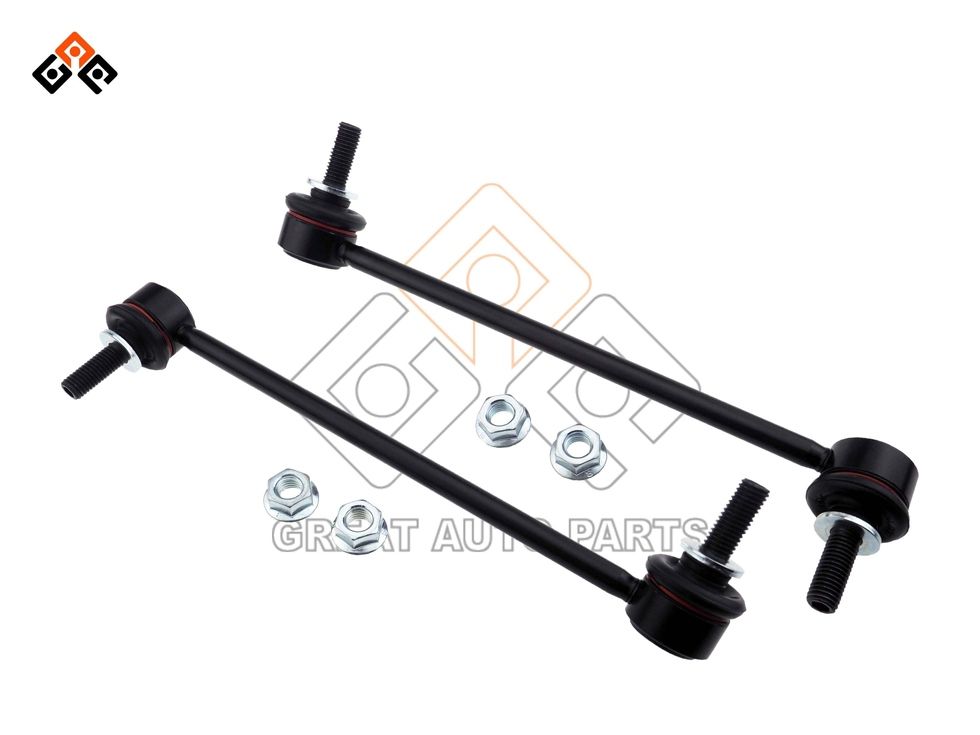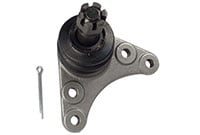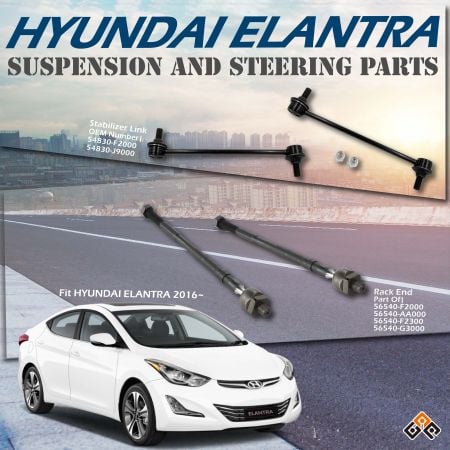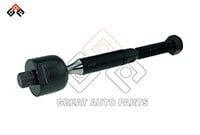Sway Bar Links Explained: How They Keep Your Car Balanced and Safe
Ever wondered why your car doesn’t feel like it’s tipping over when you take a sharp turn? That’s thanks to sway bar links—small but important parts of your suspension system. They help your car stay balanced, smooth, and safe on the road. We’ll break down what sway bar links are, how they work, and why they matter.
What Exactly Are Sway Bar Links, and Why Are They Crucial for Stability
Sway bar links might be small parts, but they play a big role in keeping your car stable. They connect the sway bar to your suspension system, helping your car stay balanced when you turn or drive over uneven roads.
When you take a corner, your car’s weight naturally shifts to the outside. This makes the suspension on the outer side press down, while the inner side lifts up. Without sway bar links, this imbalance could cause your car to lean too much, making it harder to control. The links work to share the force between both sides of the suspension, helping the car stay steady.
Think of sway bar links like team players—they connect the sway bar to the suspension so everything works together. Whether you’re driving through a busy street or going around a sharp turn, these small parts make sure your ride stays smooth and safe.

How Does a Sway Link Bar Differ from a Sway Link
At first glance, the terms "sway link bar" and "sway link" might seem interchangeable, but they serve slightly different purposes in the suspension system. Understanding the difference can help you choose the right component for your vehicle.
Sway Link Bar:
This term is often used to describe the complete setup where the sway bar and the links work together as a system. The sway bar (a long steel rod) connects to both sides of the suspension, and the sway link bars tie the sway bar to other components like the control arms or frame.Sway Link:
This refers specifically to the smaller connectors—also called "dog bones" in some setups—that attach the sway bar to the suspension. These links are crucial because they absorb and transfer the force from the sway bar to keep the suspension balanced during turns.
In simpler terms, the sway link is a key part of the sway link bar setup. Both components are engineered to reduce body roll and stabilize your vehicle, but the link is where much of the force transfer happens. For most drivers, replacing the sway links is the focus, as they experience wear and tear more frequently than the sway bar itself.

How Sway Bar Links Work to Prevent Excessive Body Roll and Improve Handling
Body roll happens when your car leans too much during a turn. This can make it feel unstable or harder to handle. Sway bar links help stop this by transferring force from the compressed side of the suspension to the lifted side.
Stabilizer Link keeping your car balanced on turns or uneven roads.
For example, when you make a sharp left turn, the right side of your car pushes down due to weight shifting. Sway bar links work with the sway bar to pull the left side down, balancing the car. This keeps your tires firmly on the road, giving you better grip and control.
How Do Sway Bar Links Improve Driving Safety in Bad Weather
Driving on wet or icy roads can be tricky, especially when your car feels like it might slide or lose control. This is where sway bar links come in. They help keep your vehicle stable by evenly distributing forces across the suspension, even on uneven or slippery surfaces.
For example, when one side of your car hits a puddle or a patch of ice, the sway bar links work to balance the suspension. This reduces the chances of your car swaying or losing grip. The result? A safer, more controlled ride, even in tough weather conditions.
Common Symptoms of Worn or Damaged Sway Bar Links Every Driver Should Know
Sway bar links don’t last forever. Over time, they can wear out or break, leading to noticeable problems. Here are the common signs:
- Clunking noises:
A loose or broken link often makes a knocking sound, especially when going over bumps. - Loose steering:
If your car feels unresponsive or “too light” when turning, it might be a sign of worn sway bar links. - Unstable handling:
A damaged sway bar link can make your car feel wobbly, especially on sharp turns or at higher speeds. - Uneven tire wear:
If one side of your car leans too much, it can cause uneven wear on your tires.
If you notice these issues, it’s time to inspect your sway bar links or visit a mechanic.
How Long Do Sway Bar Links Last, and What Affects Their Lifespan
Sway bar links are built to last, but like any car part, they wear out over time. On average, they can last anywhere from 50,000 to 100,000 miles, depending on your driving habits and road conditions.
Driving on rough terrain or through potholes can shorten their lifespan. Exposure to road salt, water, and debris can also lead to rust and corrosion. High-quality links with protective coatings tend to last longer, so it’s worth investing in durable parts.
Regular inspections can help you catch wear and tear early, saving you from bigger suspension problems down the road.
The Risks of Ignoring Worn Sway Bar Links: Damage and Safety Concerns
Driving with damaged sway bar links can lead to bigger problems. Without them, your car’s suspension has to work harder to stay balanced, putting extra stress on other parts like shocks and bushings. This can result in costly repairs down the line.
Even worse, ignoring worn sway bar links can make your car less safe to drive. It may feel unstable during turns, increasing the risk of losing control. Addressing the issue early can save you money and keep you safe on the road.
Different Types of Sway Bars in Sedans, SUVs, and Performance Vehicles
Not all sway bars are the same. The type of sway bar depends on the vehicle’s design and purpose:
- Sedans:
Standard sway bars provide balanced handling for everyday driving. - SUVs:
Thicker sway bars reduce body roll caused by a higher center of gravity, improving stability. - Performance Cars:
Adjustable sway bars allow drivers to fine-tune handling for better cornering at high speeds.
Each type of sway bar works with sway bar links to suit the specific needs of the vehicle.
Thicker vs. Thinner Sway Bar Links: Choosing the Right Option for Your Vehicle
| Aspect | Thicker Links | Thinner Links |
| Force Transfer | More force transfer, better handling | Less force transfer, smoother ride |
| Ride Comfort | Can feel stiffer on bumpy roads | Offers more flexibility and comfort |
| Best Use Cases | Racing or off-road driving | Daily driving, urban commutes |
OEM vs. Aftermarket Sway Bar Links: Which One Suits Your Driving Needs
Sway Bar Links roles vary depending on the suspension design:
| Aspect | OEM Links | Aftermarket Links |
| Compatibility | Specifically made for your vehicle | May require adjustments |
| Durability | Meets basic standards | Often stronger, designed for performance |
| Cost | Higher upfront cost | Affordable options available |




